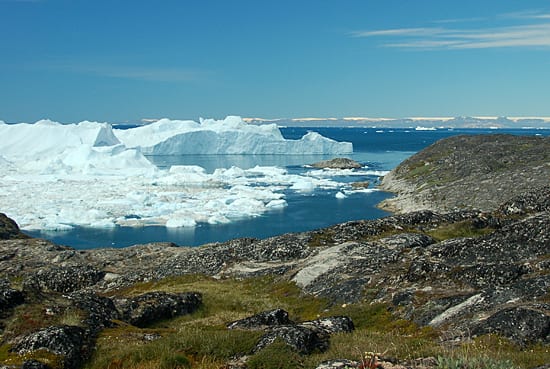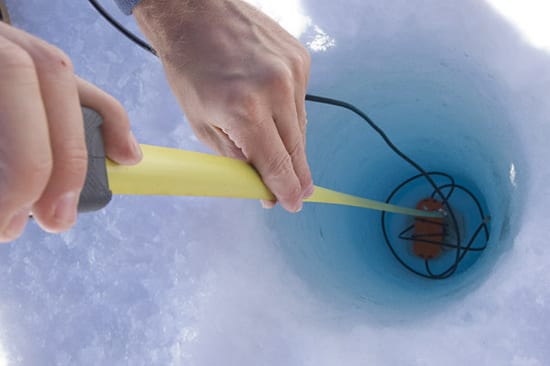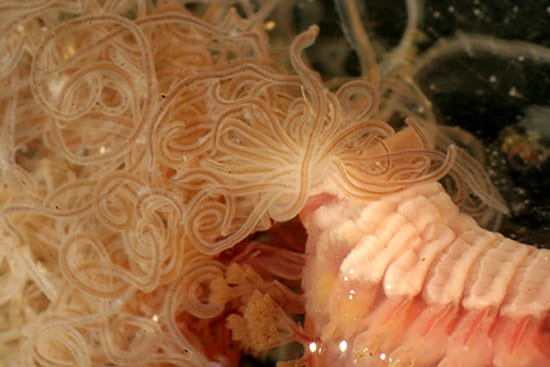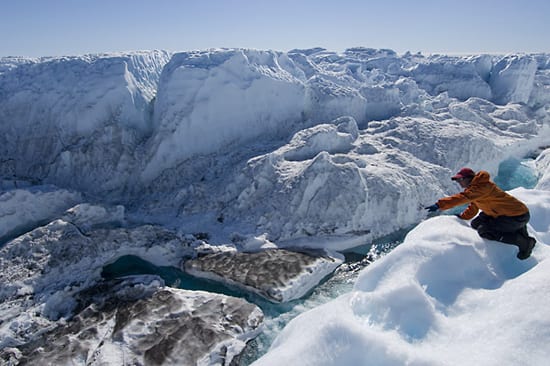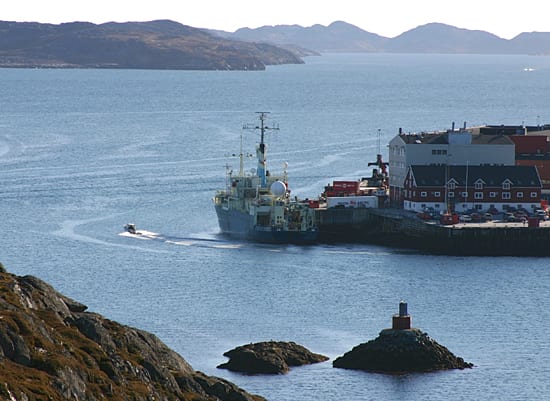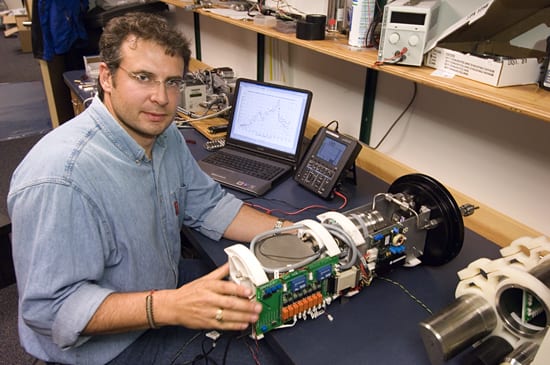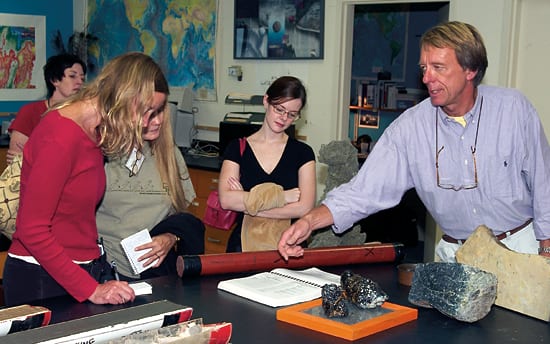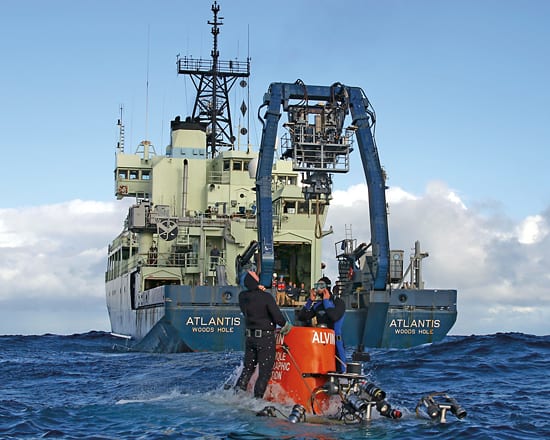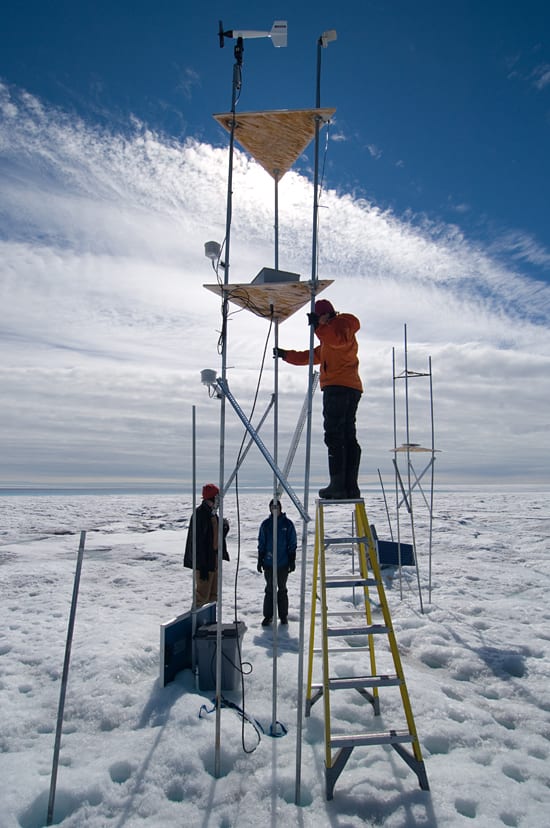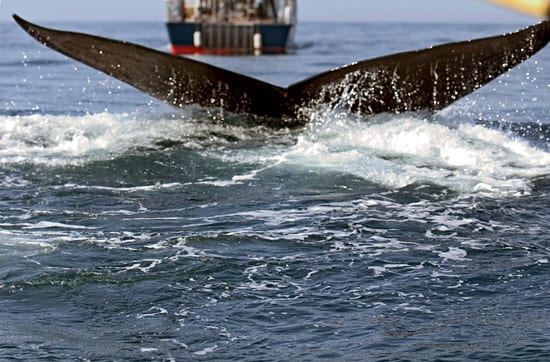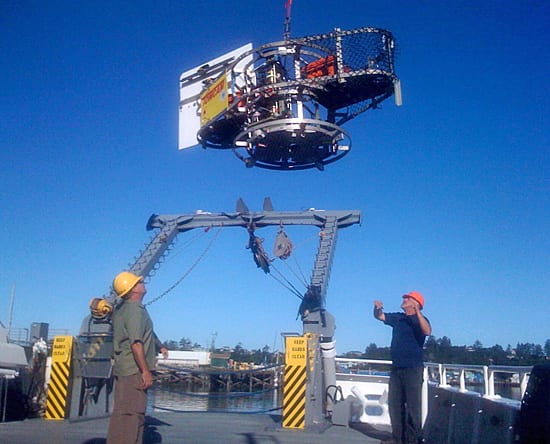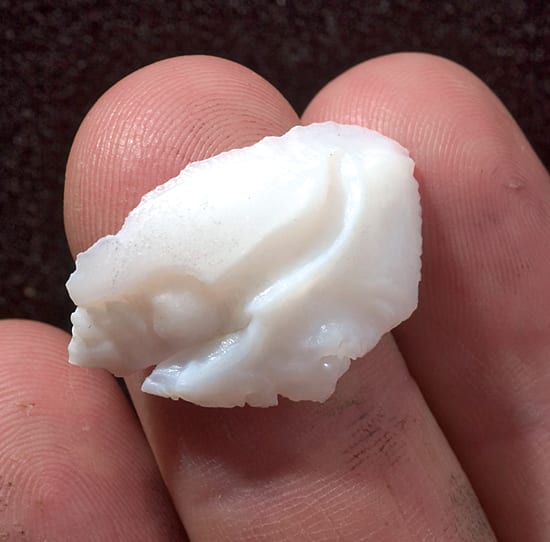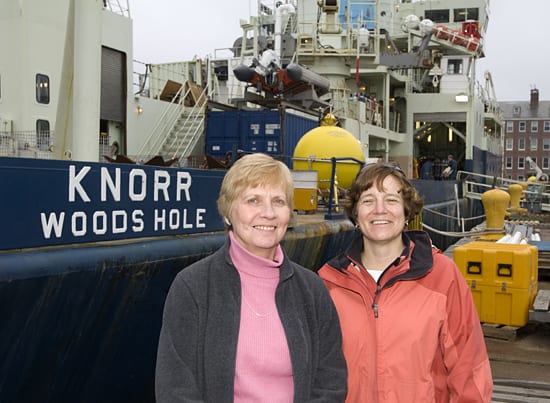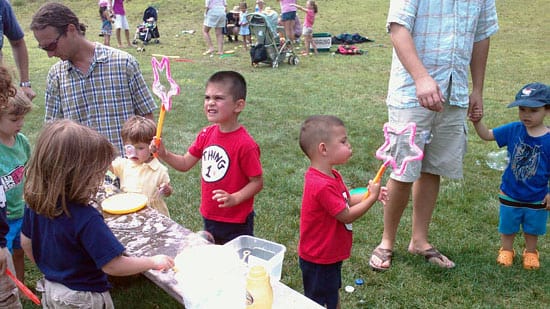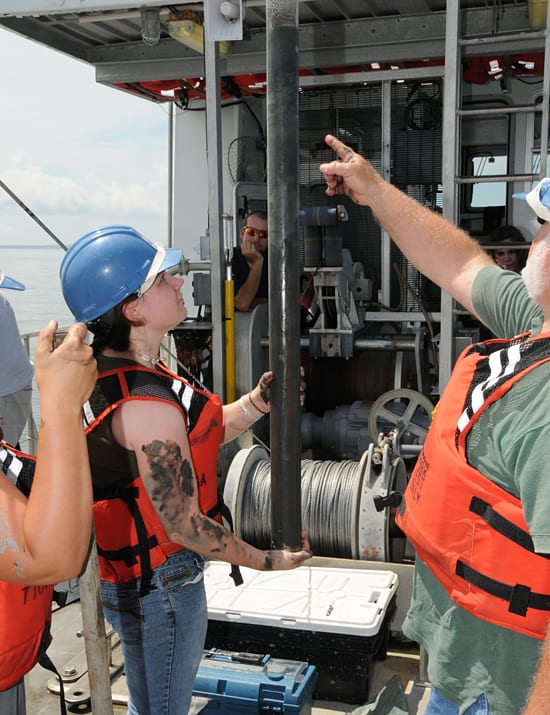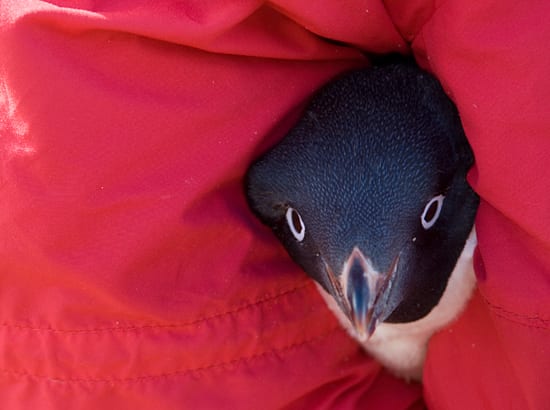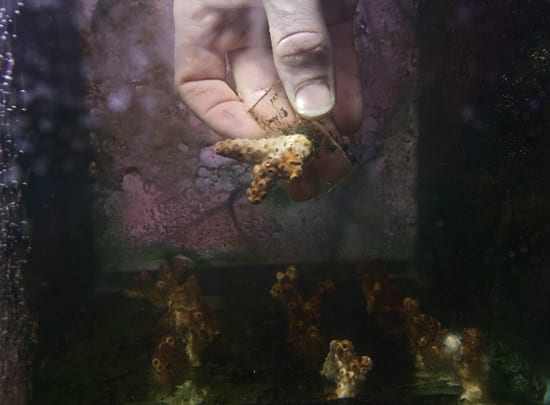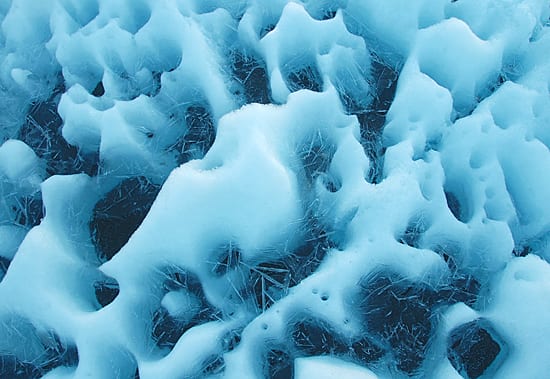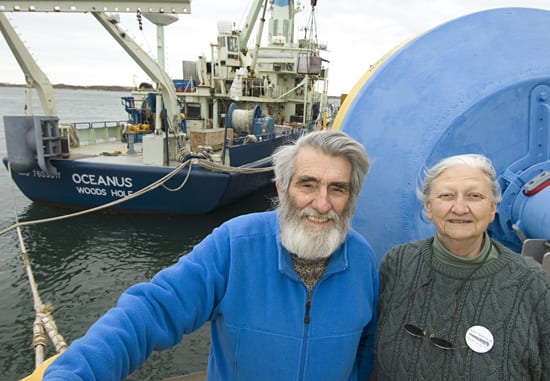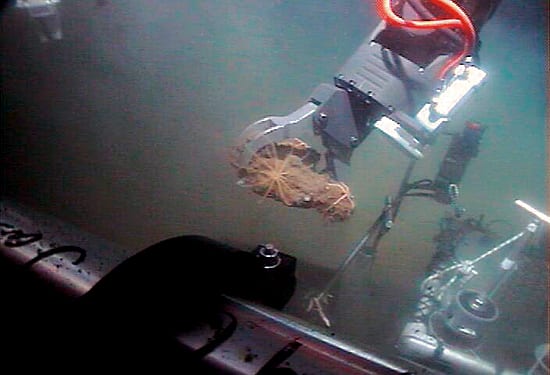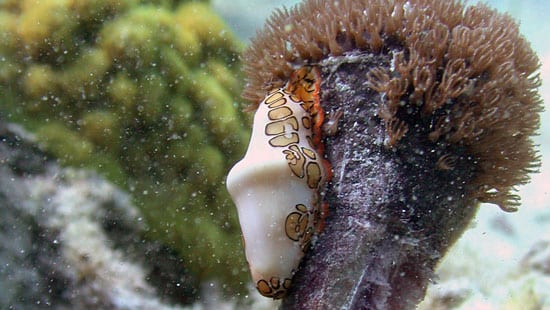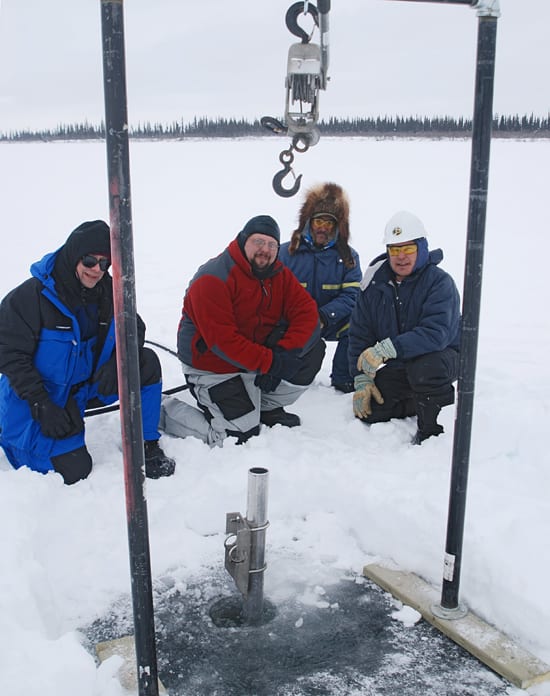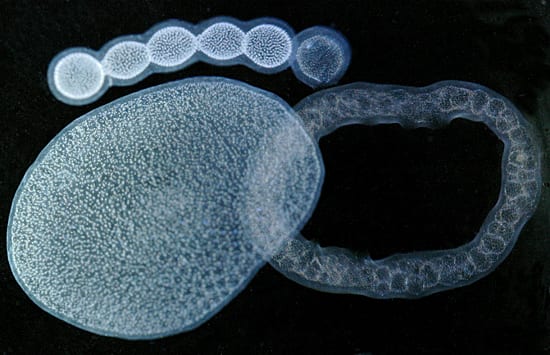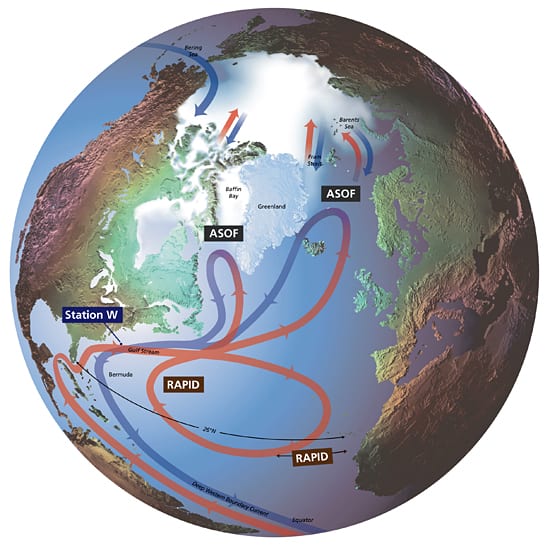Multimedia Items
Where icebergs roam free
In Ilulissat, a coastal town in western Greenland, people don’t have to walk far to see millions of tons of icebergs calving away from the glacier each year into Disko Bay. Scientists from WHOI…
Read MoreRecording ice movement
This summer, geologist Mark Behn drilled 8 feet down into Greenland’s ice sheet and left seismometers at the bottom of the holes to record ice cracking and movement. Researchers will retrieve the…
Read MorePolychaete pasta?
Magnified under a microscope, the tentacles of a terebellid —a marine polychaete worm, also called the “spaghetti worm”—look like an impossible tangle of pink yarn or vermicelli. Those sticky tentacles…
Read MoreTop Choice
WHOI geologist Sarah Das spent days this summer in Greenland looking for the perfect waterfall. Not to photograph or to take a really cold swim. She needed falling water for…
Read MoreDoesn’t Look Green from Here
The research vessel Knorr rests in port in Nuuk, Greenland, in September 2007. The ship and crew arrived at the great island after deploying submerged autonomous launch platforms, or SALPs,…
Read MoreSmall, Sensitive Sensor
Richard Camilli, a chemist and engineer in the WHOI Applied Ocean Physics and Engineering Department, builds cutting-edge instruments for sensing molecules in seawater. His miniature mass spectrometer “Gemini” (shown here)…
Read MoreMaking News
Senior research specialist Jim Broda of the Geology and Geophysics Department displays sediment cores and rocks from the WHOI Seafloor Samples Lab to a group of visiting journalists. This week,…
Read MoreWhy is this Dive Platform Moving?
For more than four decades, WHOI’s deep-sea submersible Alvin has transported scientists through ocean depths of 2.8 miles. Now a new sub is being built to continue that legacy and bring people…
Read MoreLooking long term in Greenland
WHOI glaciologist Sarah Das (climbing to reach a temperature sensor) spent July 2008 in Greenland studying lakes that form when the ice surface melts each year. The goal of this project, and many…
Read MoreDiving for Dinner
A North Atlantic right whale dives astern of WHOI’s coastal vessel Tioga during a research cruise to study their feeding. Vulnerable to ship strikes and entanglement in fishing gear, the…
Read MoreLoading the Camera
WHOI’s Towed Digital Camera and Multi-Rock Coring System—more commonly known as TowCam—is loaded onto the research vessel Wecoma in Newport, Oregon in mid-August 2008. WHOI research associate Erich Horgan (not…
Read MoreThe Ear Bone’s Connected to the Fish Home
WHOI biologist Simon Thorrold holds a fish otolith—an ear bone—that can serve as a natural tag to reconstruct the history of temperatures and seawater chemistry wherever a fish has lived.…
Read MoreNext Stop: The Cold North Atlantic
Katarina Fraser (left), a science teacher at the Perkins School for the Blind, and Amy Bower, senior scientist in the WHOI Physical Oceanography Department, say goodbye to land and prepare…
Read More2008 Summer Picnic
Core Faculty
Retired WHOI research associate Bruce Tripp (right) explains the fundamentals of how to retrieve a seadiment core, as WHOI summer student fellow Amanda O’Rourke holds their latest catch. Every summer,…
Read MoreRugby hold
There is an approved method of holding a penguin, with its head tucked under an arm. It’s called the rugby hold, so named because, from the front, the penguin’s torpedo-shaped…
Read MoreCorals in a changed sea
Postdoctoral researcher Justin Ries holds a temperate-water coral—one of many shell-forming marine animals he grew under elevated carbon dioxide levels, which increases the seawater’s acidity. Working with Anne Cohen and…
Read MoreAttack of the cryoconites
Greenland’s ice sheet is pockmarked with cryoconites, or holes filled with melted water. They form when the Sun melts darker dust and silt on the ice sheet, creating round or irregular…
Read MoreTogether in life and in science
Science and a full life go hand-in-hand for Rudolf Scheltema and Amélie Scheltema, researchers in the WHOI Biology Department who together have devoted over a century to understanding the invertebrate…
Read MoreArmed and Ready
On its first mission in 2002, the newest Jason vehicle—and its sophisticated manipulator arm, shown here—operated for nearly 300 hours without a failure. The ROV’s two manipulators can maneuver payloads…
Read MoreCorals vs. snails on a tropical reef
Ice-Road Corers
WHOI researchers Daniel Montlucon (left), Liviu Giosan (second from left) and two Inuit guides take a break from extracting sediment cores from a frozen Arctic lake. The research team, led…
Read MoreDrifting blobs in DNA database
Looking like bubbles or smoke rings, these half-inch chains, loops, and spheres are actually common planktonic animals called colonial radiolarians. Each soft shape is hundreds of single-celled animals embedded in…
Read MoreSeas in Motion
Colored arrows show two of the major current systems flowing through the North Atlantic, with red representing the warm surface waters of the Gulf Stream, North Atlantic Current, and associated…
Read More
